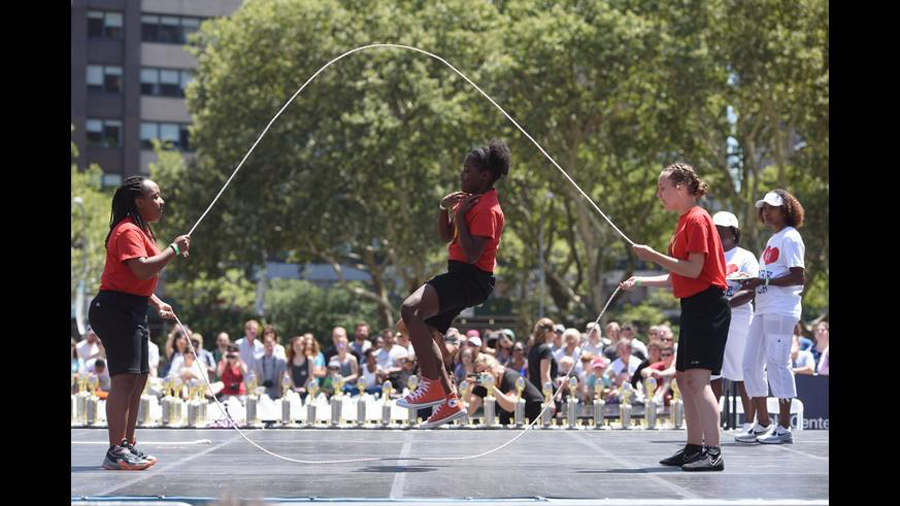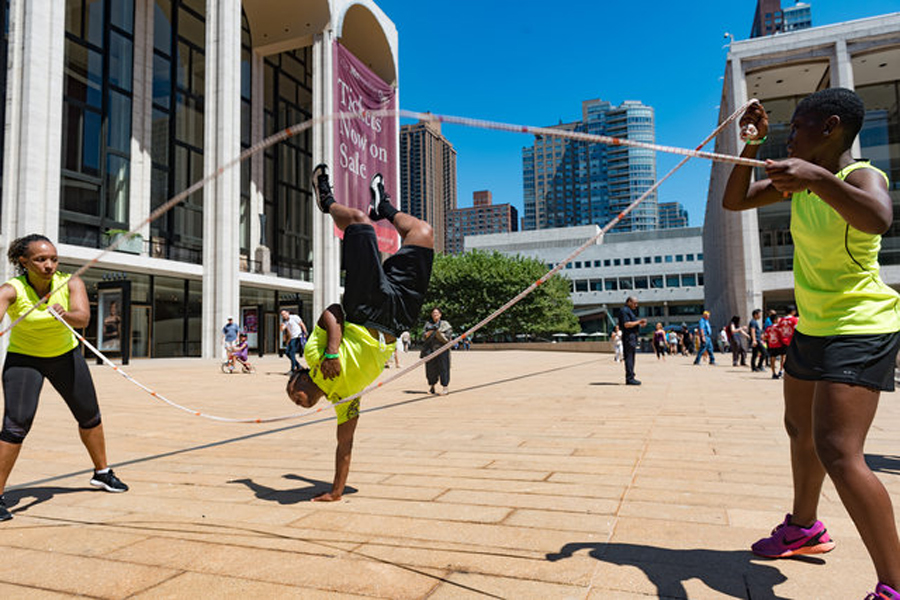Last weekend, for the first time in more than 30 years, jump ropes were swinging at New York’s Lincoln Center. Click To View
The Double Dutch Summer Classic National Competition saw 50 teams compete for honors at a site that’s inextricably intertwined with the sport’s history. From 1974 to 1984, yearly championships held on what’s now Josie Robertson Plaza offered young people college scholarships and national fame, and drew the attention of New York City. More than 40 years since the event began, Double Dutch remains a powerful tool for creativity, discipline and athleticism for the young athletes who participate.
The sport’s return to Lincoln Center was powerful for some of the women who attended, as they grew up in the heyday of Double Dutch and treasure it as an art form and a unique reflection of black culture. “I’ve been trying to communicate and articulate how layered it is,” said Kaisha Johnson, co-founder of Women of Color in the Arts, who helped organize the event. “It’s part of my tradition, it’s part of my culture, and to see it embraced here and elevated … it’s priceless.”
Many who turned out marveled at the chance to watch young women take part in something that has maintained a sense of wholesome innocence. In a panel discussion over the weekend, famed break-dancer Rokafella noted that unlike hip-hop dance, which so often portrays young women provocatively, Double Dutch “has not been adulterated. It’s still pure.”
Competing teams, made up of girls as young as fourth graders, came from Boston, New Hampshire, Maryland and all over New York City. The Classic consisted of three sections: the speed competition, compulsory (where jumpers complete specific steps) and freestyle. Running the show was Lauren Walker, president of the nonprofit National Double Dutch League, who is carrying on the mission of her late father, David, commonly considered the godfather of Double Dutch. A police detective in New York in the 1970s, he saw the disparity between athletic opportunities for boys and girls. “There were not a lot of activities for young ladies,” recounted Walker. “One day he was walking on the streets, doing his beat with his partner, and they saw some girls jumping Double Dutch in the school yard, and they thought that activity would be great to become a sport.” He began a process of formalizing the rules and practices of jumping and helped it get introduced into schools. Walker picked up the torch and is working to help grow the sport, which has exploded in popularity in Europe and Asia. She is working to get it entered into the Olympics.
As Sunday’s competition stretched throughout the day, young girls in matching shorts were unwavering in the heat as they leapt and flipped to the music. Among the judges were the members of Brooklyn’s 1979 World Champion team, the Fantastic Four, whose fame saw them perform in Europe alongside Fab 5 Freddy and star in two McDonald’s commercials. Member Robin Watterson, now 52, was 14 when they won the trophy, and she describes the depth of the connection she has with her fellow teammates as “a bond that so far no one has touched.” Though she now lives in Virginia, Watterson remains tied to Double Dutch as a coach and adviser, and cried when recalling the impact the sport has had on her.
The tradition has continued with the younger generation. “I love Double Dutch because I’m safe doing it and I feel comfortable doing it,” said 11-year-old Inazia Harris of the Brownsville, Brooklyn, Jazzy Jumpers. “It feels like it’s meant for me.”
As reported by Vogue












